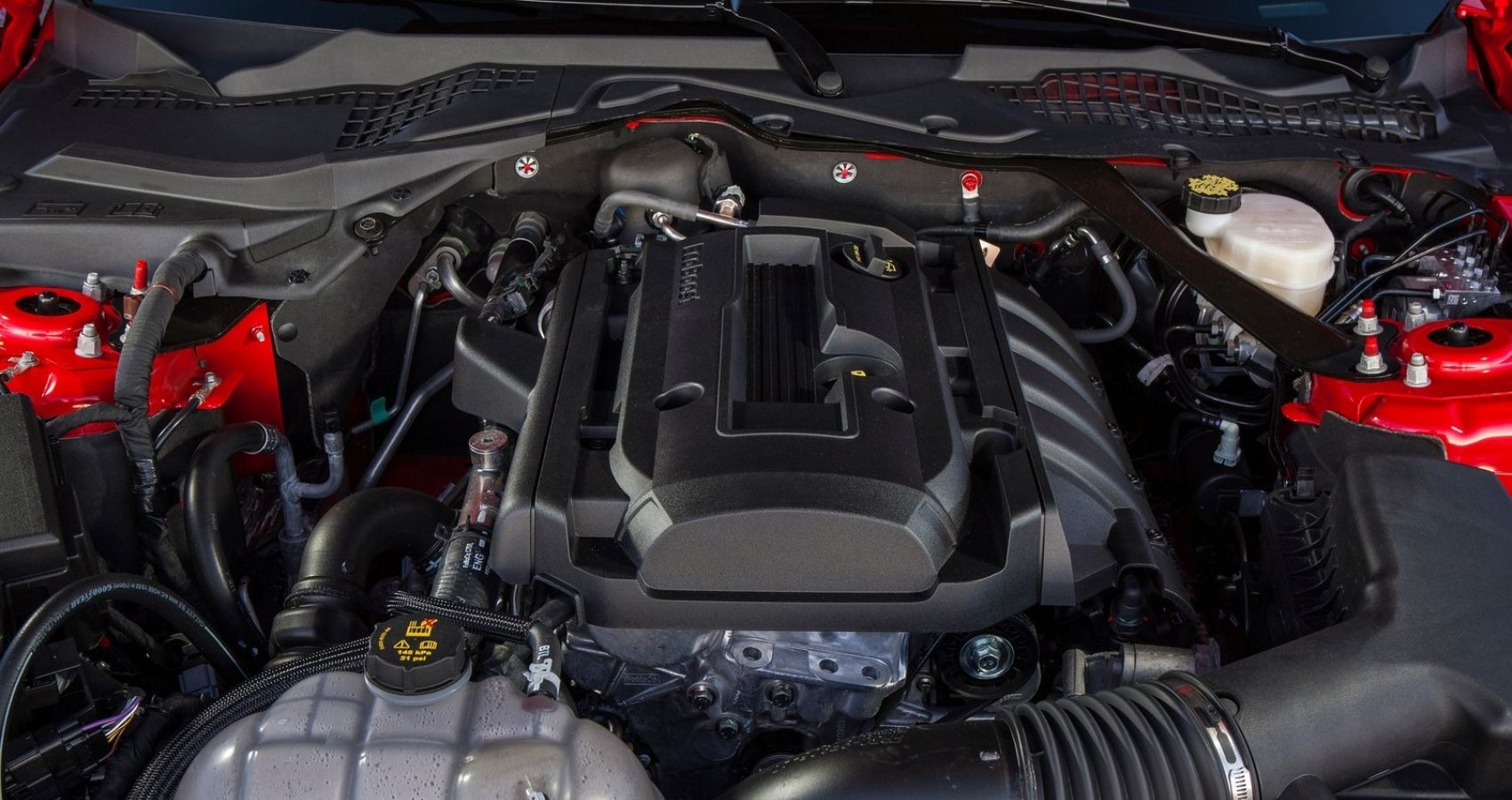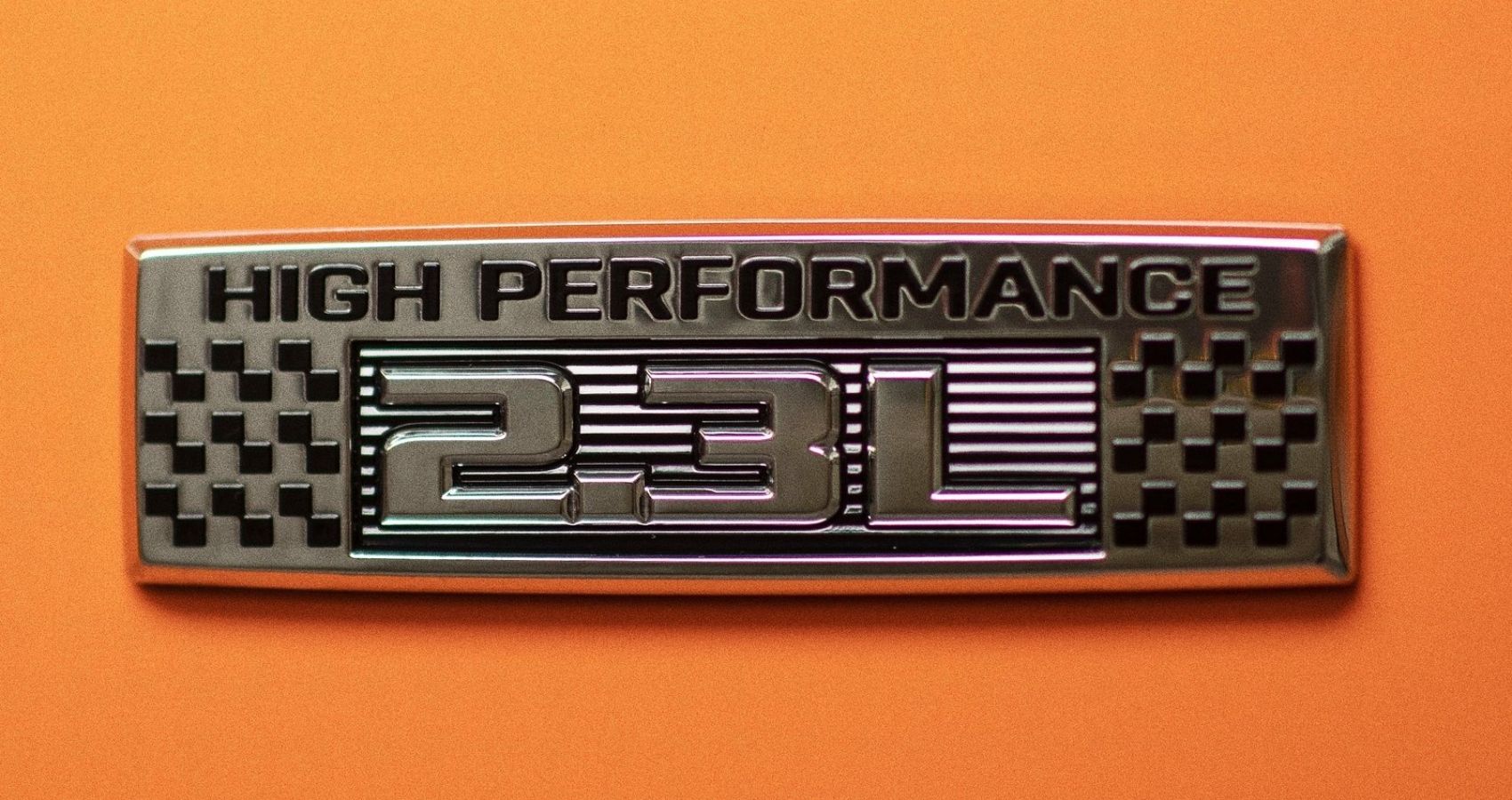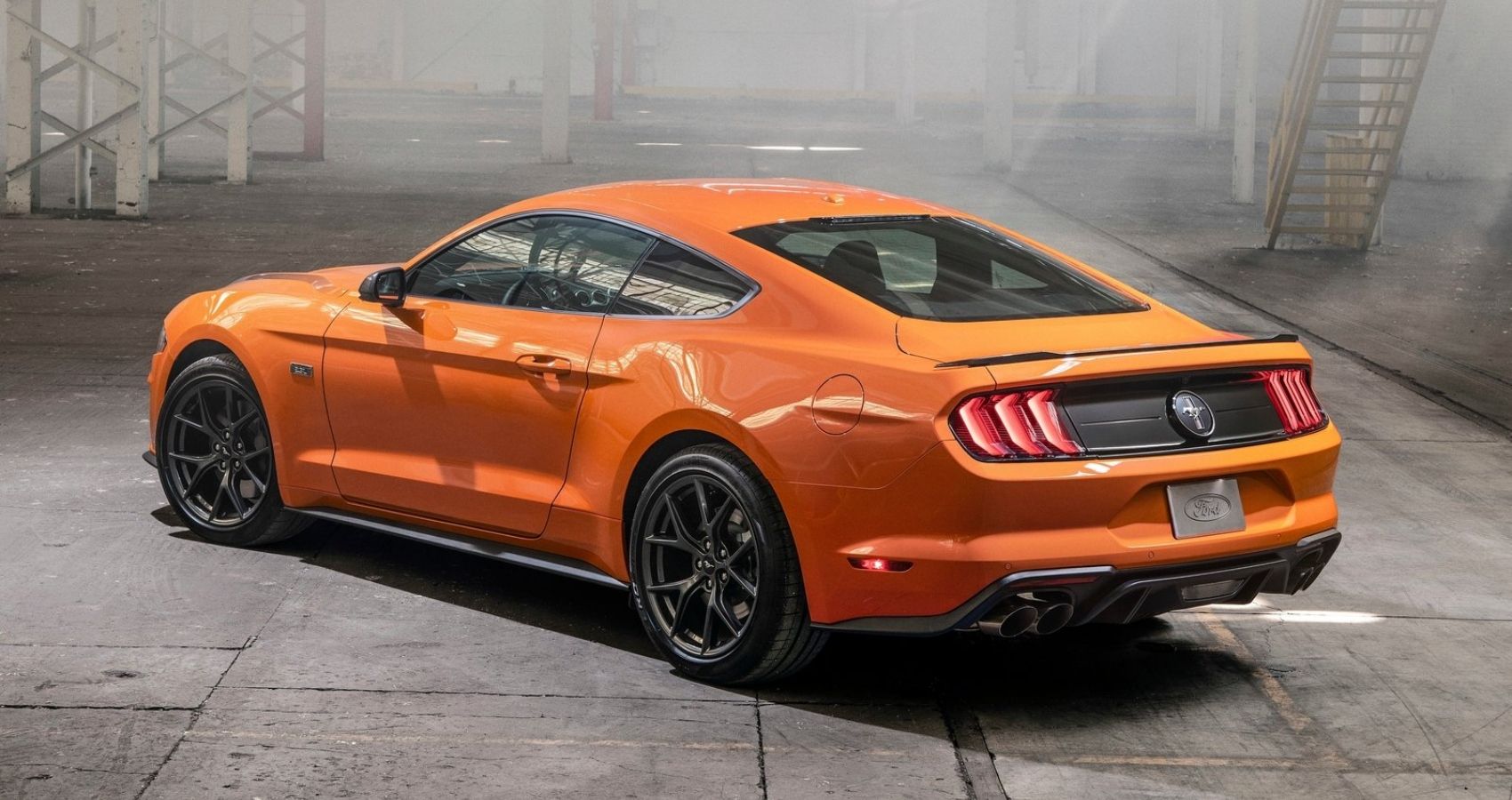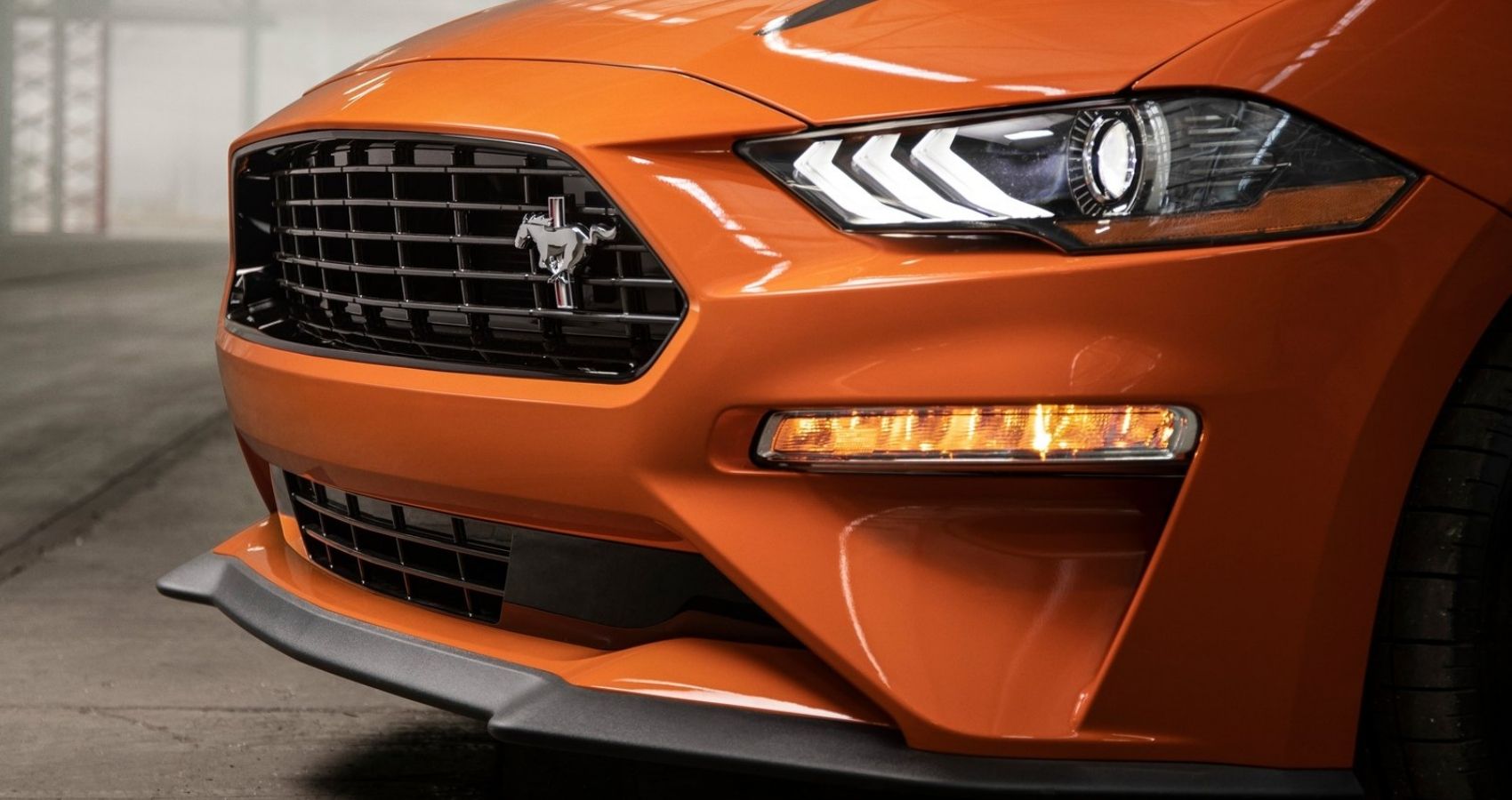Despite having four fewer cylinders than the V8 GT, the EcoBoost Ford Mustang still has the charisma of conventional muscle cars.

When the sixth-generation Ford Mustang debuted in 2013, it immediately caught the attention for its most affordable version – the one with a 2.3-liter turbocharged gasoline engine. It was the first mass-produced Mustang with a turbo inline-four, making it one of the most affordable muscle cars in the US.
However, the thought of an inline-four in a muscle car like the Ford Mustang disappointed many purists, for whom a muscle car should have nothing below eight cylinders.
However, despite it having an unconventional engine for a muscle car, more than 53 percent of Mustang owners opted for the EcoBoost. This proves that the four-cylinder gamble paid off well for Ford, despite it not being one of the most powerful versions of the Mustang.
But still, the question persists – is the EcoBoost Mustang a muscle car? We look closely at the most affordable version of the iconic Ford muscle car and tell you why it is worthy of being called a “real muscle car”.
Ford Mustang EcoBoost Keeps The Thrill Factor High
The Ford Mustang EcoBoost got its 2.3-liter turbocharged engine from the now-defunct Focus RS, widely referred to as one of the best hot hatches ever sold in the US. The four-cylinder turbocharged engine in the Mustang EcoBoost makes 310 hp and 350 lb-ft. However, with the optional High-Performance package, the power output goes up to 332 hp – almost similar to the Focus RS’ claims with the same engine.
The 2.3-liter EcoBoost engine of the Ford Mustang was already considered good for its low-end grunt. With the optional High-Performance package, it is good enough for spirited driving at higher RPMs.
Much of the power is available in the range of 2,500-5,300 rpm, which makes it much more driveable at lower RPMs than the Coyote V8. While the EcoBoost misses out on the deep rumble of the Coyote V8, the optional active valve performance exhaust is significantly loud to please your ears.
The Mustang EcoBoost Is Fast Enough For Drag Strips
With almost 100 hp less than the Mustang GT, one might think that the EcoBoost engine of the Ford Mustang is not thrilling enough to do justice to the pony car. However, the Mustang EcoBoost claims to reach 60 mph from a standstill in less than five seconds with the 6-speed manual gearbox and 4.5 seconds with the 10-speed automatic.
Compare these acceleration figures to the Mustang with the Coyote V8, the Mustang EcoBoost is only half a second slower. So, if you are thinking of taking the Mustang EcoBoost to a flat drag strip and testing its acceleration figures, you will not be disappointed.
Yes, the Mustang EcoBoost might not be as rev-happy as the Mustang GT, and one might think that the former lacks the drama of the 5.0-liter Coyote V8. However, with the souped-up suspension and 19-inch rubbers available in the optional High-Performance package, the Mustang EcoBoost is as good as the GT when it comes to handling.
The Mustang EcoBoost Retains The Pony Car Look
Ford is one of those few carmakers who have gracefully evolved their muscle cars with time, leaving both purists and young fanboys happy with their design languages. The Mustang is one such car that retains the traditional virtues of a muscle car.
Traditionally, a muscle car is defined by its long hood and a rumbling V8 engine under it which channels the power to the rear wheels. The Mustang EcoBoost misses out on one of these virtues, as it has a turbocharged inline-four instead the 5.0-liter Coyote V8 of the Mustang GT. However, it retains the other elements giving it the feel and look of a true-blue American muscle car.
Another aspect that makes us believe that the Ford Mustang EcoBoost is a treat for muscle car lovers is its choice of transmissions. Like the Mustang GT with the V8 engine, the turbocharged Mustang is available with both 6-speed manual and 10-speed automatic gearbox options. At a time when the other carmakers are ditching the manuals for their sporty DCTs, the Mustang, even in the EcoBoost version, offers the pure joy of a stick shift.
Does The 4-Cylinder EcoBoost Engine Justify The Mustang Name?
Ford raised a lot of eyebrows when it launched the Mustang EcoBoost, as many people thought that a turbocharged four-cylinder engine was a misfit for the Mustang nameplate. However, with it offering better performance over the now-discontinued 3.7-liter Cyclone V6 and being not-so-behind the Coyote V8, the EcoBoost turned out to be an absolute gem.
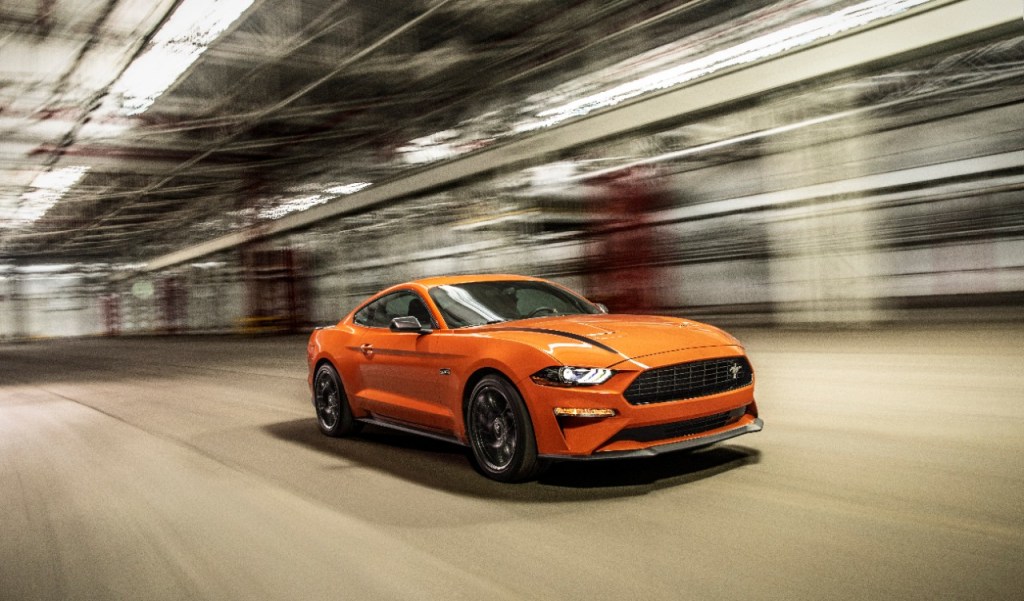
For those who thought that the EcoBoost Mustang was uninspiring and lacking the charisma of a muscle car, Ford spiced up things by offering optional packages. With the additional performance-boosting goodies, the Mustang EcoBoost feels as good as any other traditional muscle car for road course shenanigans. Some might still believe that it misses out on the brawn of a V8, but the inline-four Mustang with the High-Performance package can be as good a muscle car as the GT, if not better.



